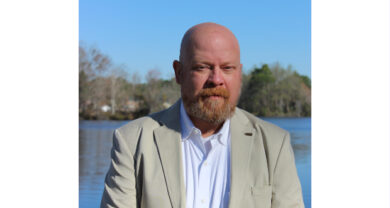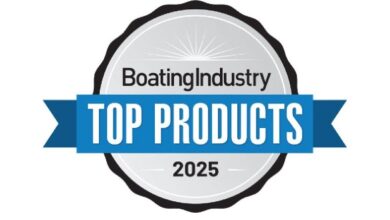Certifiable
The Marine Industry Dealer Certification Program got off to a strong start Jan. 18 in Boston, as 27 dealerships from throughout the New England area gathered to take part in the first regional Dealership Certification Launch Workshop.
Hosted by the Massachusetts Marine Trades Association, which held its conference at the same location the day prior to the workshop, the New England participants were the first to take part in the finalized program, which was tweaked after more than 20 other dealers went through a pilot certification program last year.
Dealer certification is an important component of the Grow Boating Initiative, and several industry leaders were on hand as the workshop began, including Thom Dammrich, National Marine Manufacturers Association president, and Phil Keeter, president of the Marine Retailers Association of America.
“It is my privilege to be here and I commend you for taking the time to be here as well,” Keeter told the dealers as the workshop began.
Dammrich said he believed that by the time the day was over, the dealers would be “as excited about this program as we are.”
Ron Carl and Jim Edwards from Five Star Solutions — the company that is administering the certification program — led the workshop, which was designed to walk dealers through the certification process step by step.
The dealers were given a three-ring binder titled the “Marine Industry Certified Dealership Process Guide,” which explained how to do just that. The binder consisted of information on each of the sections the certification process will cover, including: Customer Satisfaction, Employees, Training, Facilities, Sales Process, Service Process and Customer Follow-up.
The first topic covered was customer satisfaction scores. Edwards — who, along with Carl, will actually be the person that will visit the New England dealers to certify them — said the certifiers would be looking to see that a dealership is tracking its CSI data, that it has a CSI program and that it makes changes if the CSI reveals there is a problem.
“I can’t stress enough the correlation between high CSI and customer retention, “Edwards said” it’s critical to what we’re trying to do here.”
Facility requirements were next. Dealers were told that they must monitor the condition of their facilities on an ongoing basis to make sure they are well maintained and clean.
Certification requirements for the sales process followed, and this was the first of several process mapping exercises the dealers would do as part of the workshop. Carl illustrated how process mapping works by taking the dealers through the process of getting a boat fixed — from the customer’s perspective.
Using a magic marker, he drew boxes on several large writing tablets to illustrate each step in the process. From the call to the dealership, following that call as it is routed to the proper person, to where the customer parks when he brings the boat in for service, Carl mapped 16 steps just to get the boat to the dealership’s front door.
“Managing the white spaces, all the things that can go wrong between the steps, is how you get lean,” Carl said.
Larry Russo Sr., whose dealership was certified as part of the pilot program, was on hand for the workshop and attested to the benefits of mapping.
“What’s beautiful about these mapped processes is that everybody is on the same page every day,” Russo said.
The dealers then used a process-mapping chart (a piece of paper about 2 feet tall and more than 3 feet wide) that was included in the binder, to map the first three steps in the sales process — consideration, inquiries and greeting and reception.
Survey says
Maybe the most surprising, and beneficial, portion of the workshop came next. Surveys from each dealership’s employees, that had been completed and returned to FiveStar in advance of the workshop, were handed out and seen by owners and managers for the first time.
The surveys showed how the employees scored the dealership in several areas and how those scores compared to average scores other dealers received on the same questions. The surveys also included the top scores received in each category — although no names were used to keep the process confidential — to give dealers a yardstick to measure themselves by.
“The people that were in the pilot program were amazed by the surveys,” Keeter said.
Russo said that when he saw them for the first time it was “an eye opener.”
Edwards told the dealers that the survey information should be used as a tool, not as a weapon, and said dealers should share the results with their employees to get concerns out in the air and start addressing them.
The workshop concluded with mapping exercises involving the service and parts processes and then dealt with customer follow-up requirements.
Throughout the day the instructors also answered questions about the program and took notes on suggestions the dealers had to improve the process.
“We’re not looking to fail anybody,” Carl said. “We’re trying to be as accommodating as possible.”
Edwards said it would generally take a dealership 35-to-40 days after attending the workshop before it is ready for FiveStar to come in for the inspection. The company will actually come in ahead of time for a pre-certification inspection, look things over and tell dealers what they need to work on, although if a dealer is in compliance then they are automatically certified.
When the inspection does take place, Edwards said about 60-to-65 percent of dealerships pass on the first inspection. If they don’t, the certifiers tell them what they need to work on, then come back when the dealer feels he or she is ready for another try, and just look at what it was that needed fixing. They don’t do the whole inspection over again.
Why certify?
The goal of the certification program is to get a minimum of 250 dealerships certified by the end of 2006. Several more workshops are scheduled over the next few months and will be held at multiple locations around the country.
Carl and Edwards spent a lot of time speaking about the benefits that dealerships that go through the certification process will realize. They said that in their experience — which includes FiveStar’s work with Chrysler — increased unit sales and higher CSI scores usually came about from the process, as do higher employee satisfaction, lower operating costs and higher profit margins.
But one very concrete carrot the Grow Boating Initiative can use to persuade dealers to participate in certification are the leads generated by the campaign.
Those leads, and there could be a lot of them, will go to certified dealers.
Keeter said that GO RVing develops about 15,000 leads a year through its campaign, with about a 65-percent completion of those leads. If Grow Boating even approaches those numbers, the benefits to certified dealers are obvious.
“Ultimately this is about money, it’s about selling more boats,” Russo said. “If you are certified you will get leads from the Grow Boating campaign. If you’re involved in certification you deserve those leads.”
Keeter said certification helps measure and improves a dealership.
“It equals control,” he said. “You need to be in control. This is a self-help program.”
Russo, who has already gone through the process completely, is also a big fan.
“We’re 65 years old and we’re reinventing our company because of this,” Russo said. “The process is cleansing, it’s so rewarding.”




